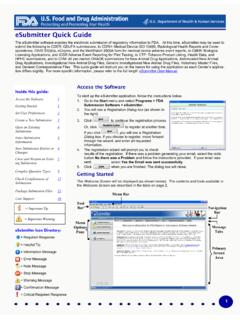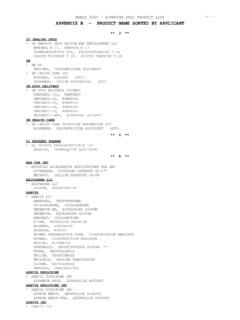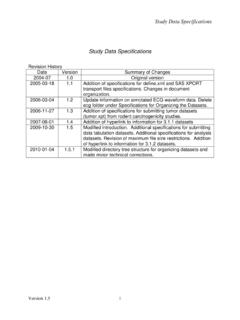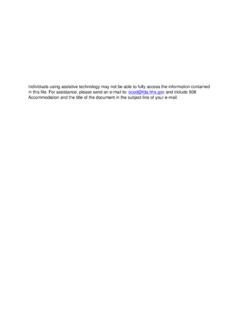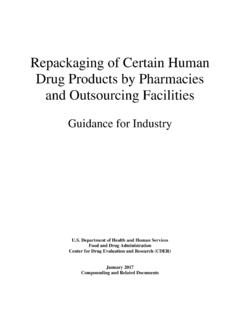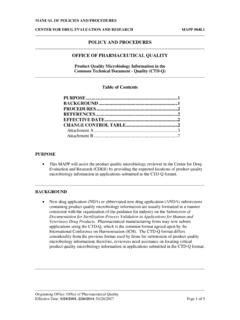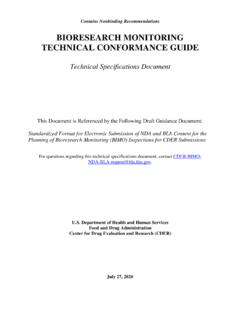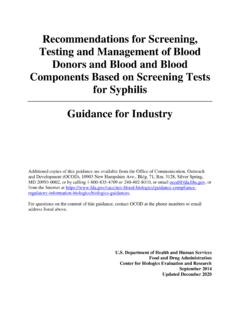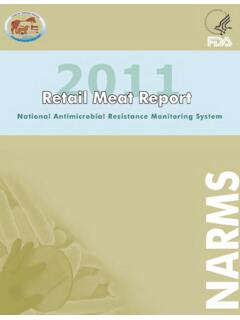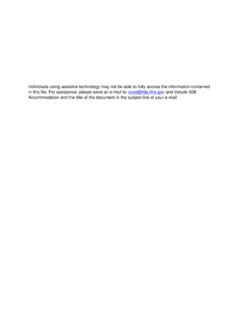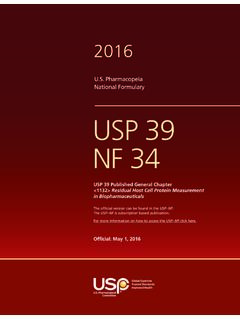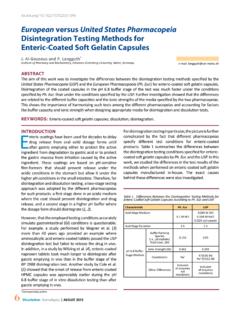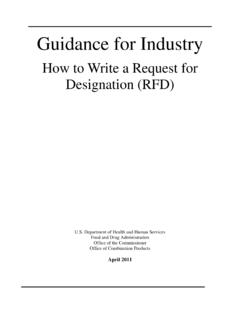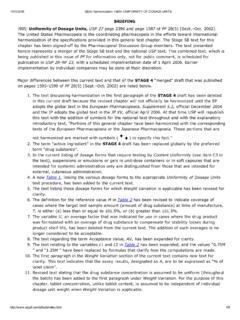Transcription of FDA and Clinical Drug Trials: A Short History
1 FDA and Clinical Drug Trials: A Short History By Suzanne White Junod, 1 The function of the controlled Clinical trial is not the "discovery" of a new drug or therapy. Discoveries are made in the animal laboratory, by chance observation, or at the bedside by an acute clinician. The function of the formal controlled Clinical trial is to separate the relative handful of discoveries which prove to be true advances in therapy from a legion of false leads and unverifiable Clinical impressions, and to delineate in a scientific way the extent of and the limitations which attend the effectiveness of drugs.
2 William Thomas Beaver 2 Overview The Food and Drug Administration has evolved as one of the world's foremost institutional authorities for conducting and evaluating controlled Clinical drug trials. Ancient civilizations relied on medical observation to identify herbs, drugs and therapies that worked, and those that did not. Beginning in the early twentieth century, therapeutic reformers in the United States and in other places began to develop the concept of the "well-controlled" therapeutic drug trial. This concept, included, for example, laboratory analysis followed by Clinical study.
3 As medical historians have pointed out, however, these early reformers' therapeutic vision often far exceeded their Clinical and experimental grasp. 3 In 1938, a newly enacted Food, Drug, and Cosmetic Act subjected new drugs to pre-market safety evaluation for the first time. This required FDA regulators to review both pre- Clinical and Clinical test results for new drugs. Although the law did not specify the kinds of tests that were required for approval, the new authority allowed drug officials to block the marketing of a new drug formally or delay it by requiring additional data.
4 The act also gave regulators limited powers of negotiation over scientific study and approval requirements with the pharmaceutical industry and the medical profession. A worldwide drug disaster in 1961 resulted in the enactment of the 1962 Drug Amendments, which explicitly stated that the FDA would rely on scientific testing and that new drug approvals would be based not only upon proof of safety, but also on "substantial evidence" of a drug's efficacy [ the impact of a drug in a Clinical trial setting]. Increasingly, responsibility for testing standards previously established as voluntary by the American Medical Association's (AMA) Council on Drugs, the pharmacopeia and the National Formulary were taken up by the FDA.
5 Since 1962, FDA has overseen substantial refinements to the broad legal requirement that post-1962 new drugs be approved on the basis of "adequate and well-controlled" studies. 4 Medical Observation As Precursor to Clinical Trials Clinical trials are prospective, organized, systematic exposures of patients to an intervention of some kind (drug, surgical procedure, dietary change). The earliest recorded therapeutic investigations, however, lacked the rigor of a modern Clinical trial. Based largely on observations and tested through time by trial and error, ancient medicine such as that practiced by the Food and Drug Administration Egyptians, Babylonians, and Hebrews was closely allied with religion.
6 Nonetheless, some of these early medical investigations did yield some important successes in fields such as minor surgery and orthopedics. The Hebrews, in particular, excelled in public hygiene, but even their public health strictures, so effective in preventing epidemic disease, were observational and experiential rather than experimental. 5 The Babylonians reportedly exhibited their sick in a public place so that onlookers could freely offer their therapeutic advice based on previous and personal experience. 6 The first mention of a paid experimental subject came from Diarist Samuel Pepys who documented an experiment involving a paid subject in a diary entry for November 21, 1667.
7 He noted that the local college had hired a "poor and debauched man" to have some sheep blood "let into his body." Although there had been plenty of consternation beforehand, the man apparently suffered no ill effects. One of the most memorable successes from an early but earnest Clinical trial was actually more of an anomaly rather than a harbinger of great progress in medical experimentation. British naval surgeon James Lind (1716-1794), who had learned of the death of three quarters of a ships' crew during a long voyage around the world, planned a comparative trial of several popularly suggested "cures" for the scurvy on his next voyage.
8 Twelve men with similar cases of scurvy ate a common diet and slept together. Six pairs, however, were given different "treatments" for their malady. Two were given a quart of cider daily; two an "elixir;" two seawater; two a remedy suggested by the ship's surgeon (horseradish, mustard and garlic); two vinegar; and the final two were given "oranges and lemons" daily. One man who received the oranges and lemons recovered within six days, while the other recovered sufficiently that he "was appointed nurse to the rest of the sick." At first Lind questioned his own experimental results, but by the time he published them (1753 and 1757) they were recognized as important.
9 Nonetheless, the British Navy did not supply citrus to its ships until 1795. 7 Although simple observation may provide a starting point for medical study, however, experience has shown that it is rarely efficient at advancing medical knowledge. As one early proponent of planned experimentation in the form of Clinical trials remarked, "when we are reduced to [mere] observation, science crawls." 8 A modern drug regulator is more explicit, acknowledging that modern retrospective [studies], epidemiologic analyses, and astute observations are all instructive. Although Clinical trials are not the only way to find things out, the Clinical trial is unique.
10 "It is under the investigator's control, subject not to data availability or chance but to his ability to ask good questions and design means of answering them." 9 Evolution of Clinical Trial Concept in America According to medical historian Harry Marks, the modern controlled Clinical trial is largely an American invention as statistically-based Clinical trials became a critically important part of evidence-based medicine in the following WWII. 10 Certainly Clinical trials in this country have evolved in pursuit of a larger therapeutic goal -- to see that the physicians use the best possible therapies available.
